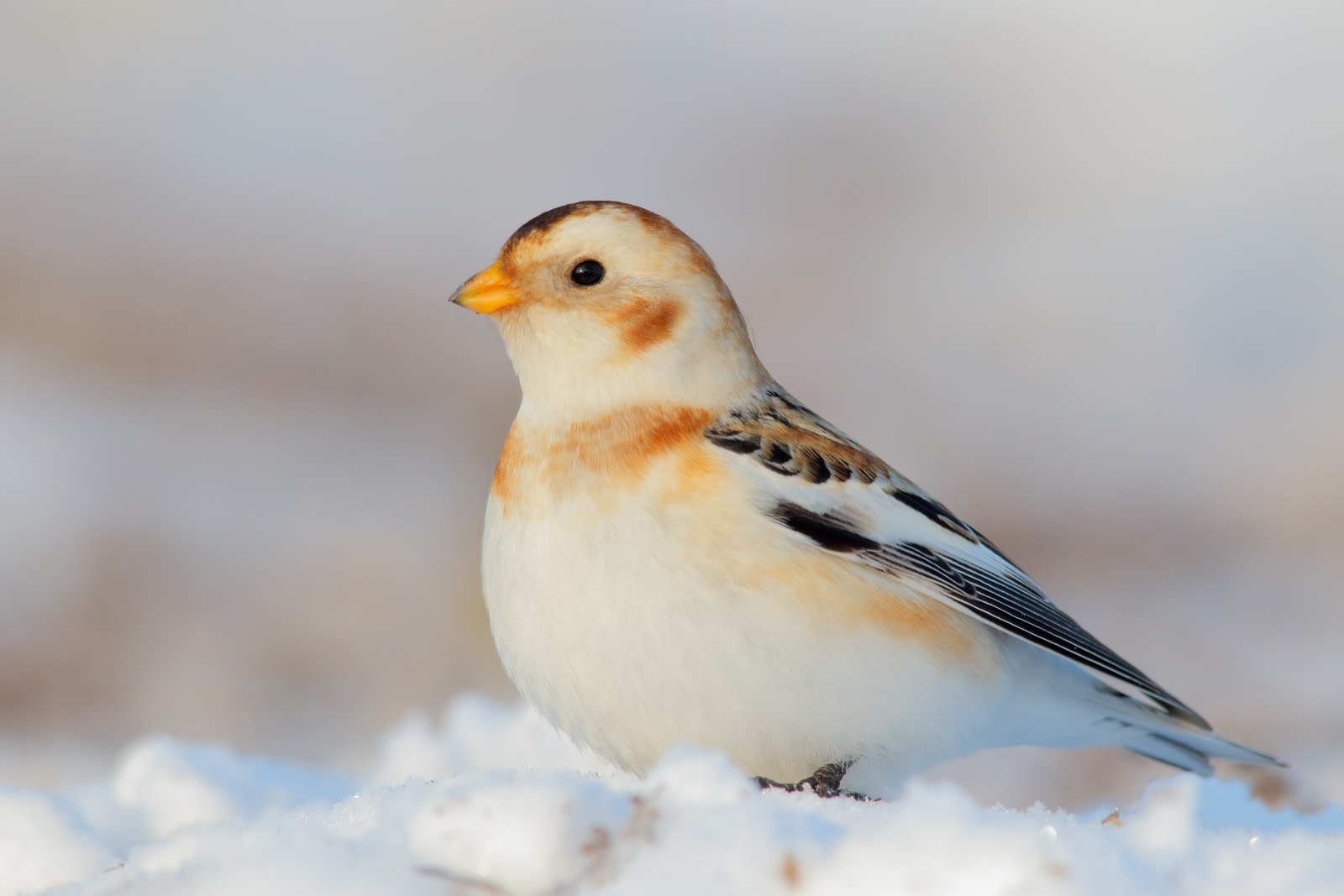Name: Snow Bunting, Bruant des neiges, Snowflake (Plectrophenax nivalis)
Length: 15 cm.
Weight: 30 to 45 g.
Location: Arctic in summer, mid-way down U.S. or Eurasia in winter.
Conservation status: Least Concern.
Diet: Seeds, insects.
Appearance: Medium-sized songbird configuration. White with brown or black wings, tail, stripe on head, and lighter brown striping across eyes and along sides. Colourization depends on location and season.
How do Snow Buntings feed?
Snow Buntings are ground foragers.
Are Snow Buntings social?
Snow Buntings will forage and migrate in flocks, but usually become more stand-offish when it comes to defending nesting sites during breeding season.
How fast do Snow Buntings fly?
Snow Buntings can fly at speeds approaching 45 km per hour.
What are Snow Bunting birthing rituals like?
Male Snow Buntings arrive in the high Arctic breeding grounds at the beginning of April when temperatures can still dip as low as -30°C. They will claim and defend nesting sites in loose colonies of usually a little less than 100 birds.
Females arrive towards the middle of May. Nests are built in cracks in rocks, insulated against the cold with feathers and fur. 2 to 7 eggs will be laid. In order to keep the eggs warm the female will rarely leave the nest during the incubation; the male will do all the foraging in order to keep her fed.
The eggs hatch after about 2 weeks. The chicks are able to fledge after another 2 weeks of parental care.
How long do Snow Buntings live?
Snow Buntings can live up to 9 years.
How many Snow Buntings are there today?
Estimates place the worldwide Snow Bunting population at over 30 million individuals.
Do Snow Buntings have any natural predators?
Snow Buntings are prey for Arctic Foxes, Snowy Owls, Falcons, and Skuas (Jaegers).
7 Bountiful Snow Bunting Facts
1. There are 4 subspecies of Snow Bunting:
- Plectrophenax nivalis townsendi – Aleutian Islands, Kamchatka, eastern Siberia.
- Plectrophenax nivalis insulae – Scotland, Iceland, Faroe Islands.
- Plectrophenax nivalis vlasowae – Asia.
- Plectrophenax nivalis nivalis – Europe, North America.
2. Snow Buntings have been known to cross-breed with Beringian McKay’s Buntings in Alaska.
3. When a flock finds a good foraging ground (like a farm field) the birds at the back of the flock will fly over and ahead of the birds at the front creating a rolling wave.
4. Snow Buntings are one of the few species that will inhabit exposed bits of tundra sticking up above the surrounding ice. These islands of tundra are called nunataks.
5. Snow Buntings represent the coming of winter to people living in their southern migration zone, but are looked for as a harbinger of spring by those living in the Arctic.
6. During the winter Snow Buntings have a more subdued colourization with light brown markings to break up the white. However by the time breeding season rolls around the males have grown into their high-contrast black on white covering.
7. Snow Buntings breed further north than any other land-based bird.



